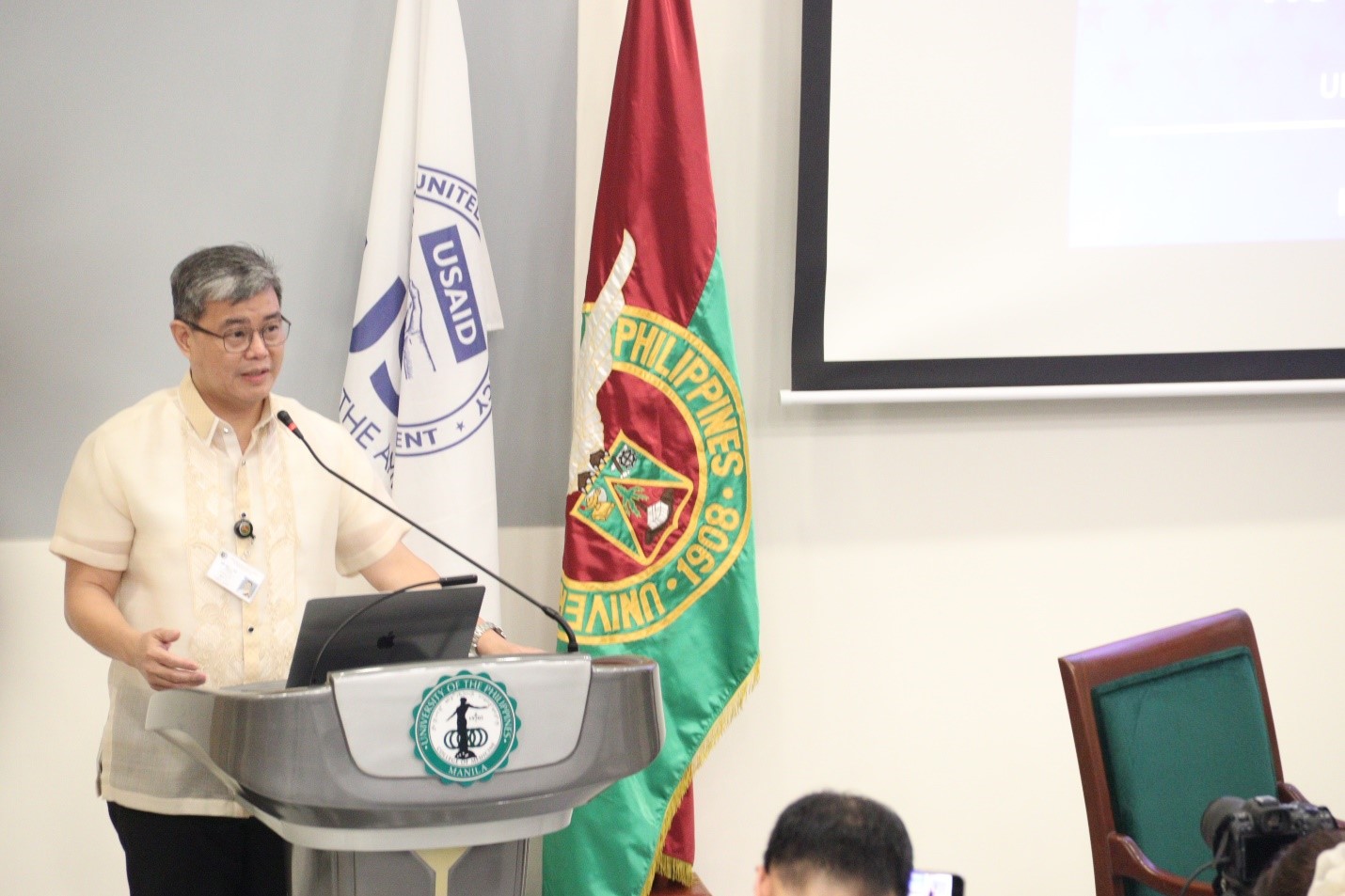Improving the Filipinos’ average life expectancy from 70 to 80 years rests on the “re-orientation” of the healthcare system, a high-ranking official of the United States Agency for International Development (USAID) said.
While the Philippines is on its way to becoming an upper middle-income country, local health outcomes do not reflect that of a country with the said economic classification.
“The Philippines is well on its way to being an upper middle-income country but the results of health in the country are not that of an upper middle-income country. Life expectancy here is a decade shorter than it should be. Only around 70 years of life,”
Dr. Atul Gawande, USAID Assistant Administrator for Global Health
said in a press briefing at the University of the Philippines Manila on Jan. 31, 2024. Gawande was in the country from January 29 to February 1, 2024, to reaffirm the US-Philippine partnership in strengthening the health system and addressing health challenges including the fight against tuberculosis (TB) and HIV.
Gawande, who served as a member of President Joe Biden’s transition COVID-19 advisory board, said that most of the risks are among children and the youth in general who are dying in numbers “that are completely avoidable.”
“It’s conditions like TB and HIV. It’s missed immunizations. It’s a lack of family planning. It’s mental health need,” he pointed out.
Strengthening the Primary Healthcare System
“Focus on support to strengthen your primary healthcare systems and demonstrate to the world how those stronger systems can achieve higher life expectancy across the life course,” he advised.
In his meeting with Department of Health (DOH) Secretary Teodoro Herbosa, Gawande hailed the eight-point plan of the DOH for improving life expectancy among the population. Strategies include the elimination of TB in the Philippines and addressing HIV and child nutrition. To achieve this, a sound primary healthcare system is imperative.
“You simply cannot reach people to do the screening for TB or threats in childhood, like TB or addressing threats in childhood like nutrition or lack of vaccinations or pneumonia without strengthening the Primary Healthcare system,” he explained.
Sec. Herbosa has offered a tandem of solutions to enhance the primary health care system for 28 million Filipinos by 2028: improving the Konsulta program of the Philippine Health Insurance Corporation (Philhealth) and strengthening rural health units.
Asked whether the targets are realistic, Gawande replied, “Very much yes.” He said “Providing primary healthcare services in large centers that people can come to in the city centers and provinces” is one good approach to strengthening primary healthcare in the country.
“That part is highly achievable and the financial plans are in development to begin to get to that place and, in fact, there is more that can be done. The strengthening of the rural health units is going to be critical…Those are spaces where we’re partnering — working to enable the success of that whole primary healthcare plan. Whether it’s working with Philhealth like we’re doing. Support their ability to improve the Konsulta program or in some of the highest urban regions we’re working to make the whole program and systems of care to whether it’s training or electronic systems support the ability to make that better,” he emphasized.
Gawande echoed the need to strengthen the local primary healthcare system in his lecture at the University of the Philippines Manila titled, “How Filipinos Can Live Longer.”

Results of Investing in Primary Healthcare System
Gawande cited the gains experienced by Thailand after making a substantial investment in primary healthcare to attain universal health coverage.
After lagging behind Malaysia and Vietnam, Thailand began investing heavily in its primary healthcare system in the ‘70s and ‘80s by improving access to primary healthcare services. This meant adding more rural health centers and increasing the supply of primary healthcare providers outside larger cities, the Primary Healthcare Performance Initiative (PHCPI) reported. Instead of constructing new urban hospitals, Thailand shifted its focus to building rural district hospitals and health centers from 1982 to 1986. Essentially, Thailand focused on two major goals: expanding the geographic accessibility of effective primary healthcare protecting the poor from high health costs, and improving financial accessibility to primary healthcare.
“Starting in the last decade they have not only outpaced the other countries in the region in survival, they have now matched the US’ life expectancy there at 79 years, almost 80-year life expectancy compared to 70 in the Philippines. And they’re doing that on the same budget that the Philippines has for health,” Gawande said.
In his welcome remarks before Gawande’s lecture, University of the Philippines Manila Chancellor, Dr. Michael Tee hailed the development of a surgical checklist by a team of experts led by Gawande in 2009. The World Health Organization Safe Surgery Checklist was piloted in Tanzania, Philippines, India, Jordan, USA, Canada, United Kingdom, and New Zealand. DOH Secretary Teodoro Herbosa headed the local team that conducted the safe surgery checklist trial at the Philippine General Hospital. The checklist paved the way for a safer conduct of surgery through a 47% reduction in death rate. “In their landmark study published in the New England Journal of Medicine, through a similarly easy way, they reduced to 7%, from 11%, inpatient complications after the introduction of the Surgical Safety Checklist. Mortality went down from 1.5% to 0.8% or a NNT of 142. If annually at least 27,000 surgeries are performed in PGH, this means at least 3000 lives have been saved by a 2-minute routine since its implementation in our institution alone,” he said.
Jennifer F. Manongdo